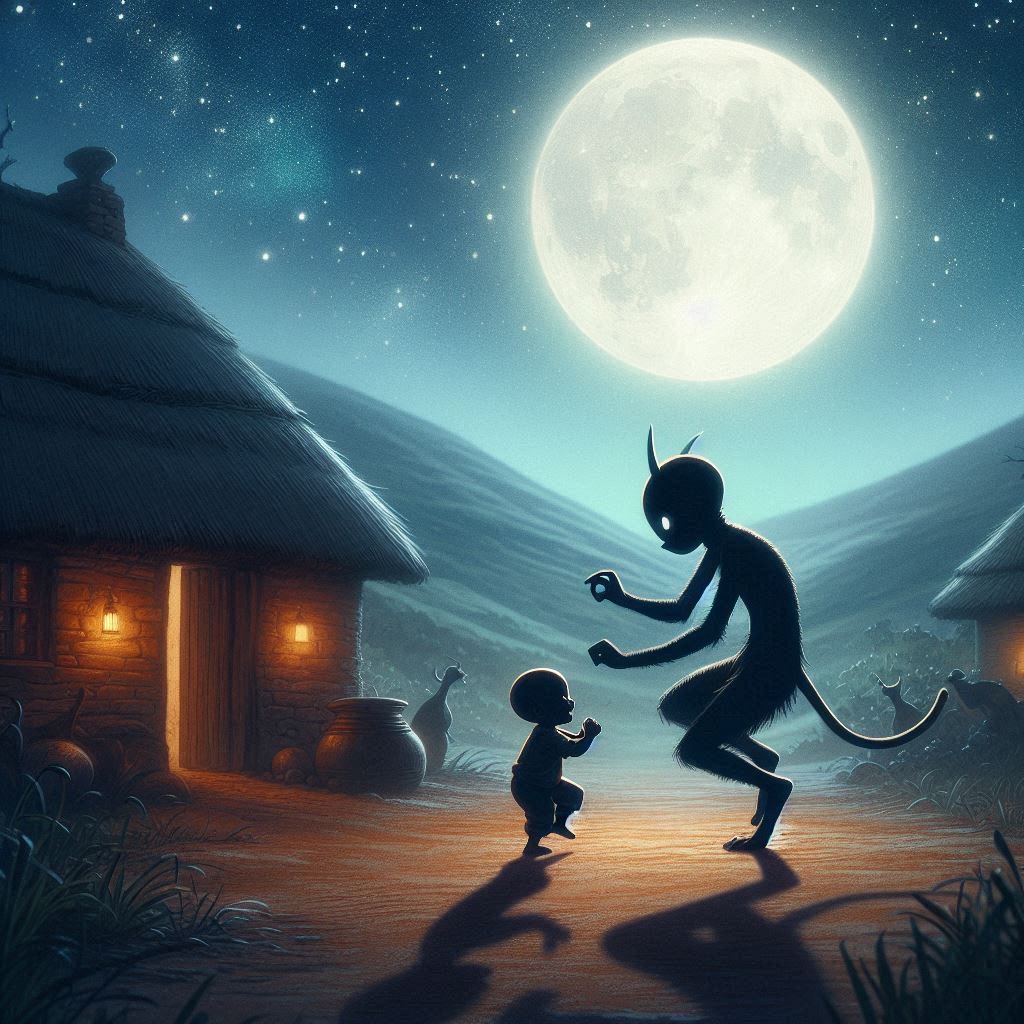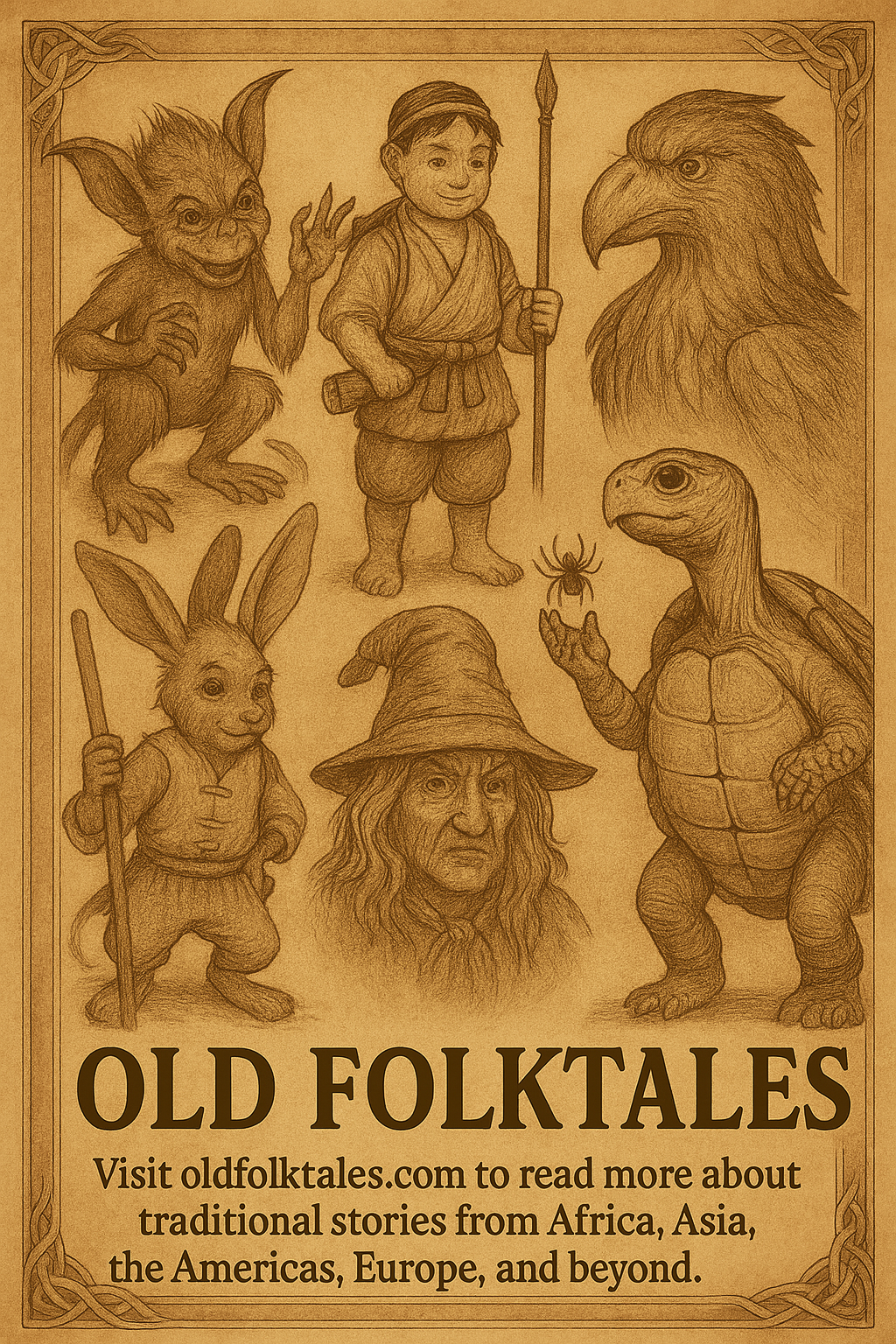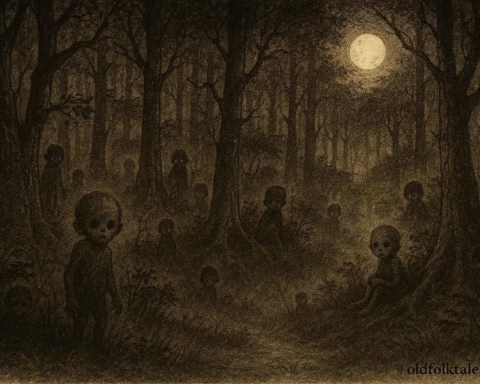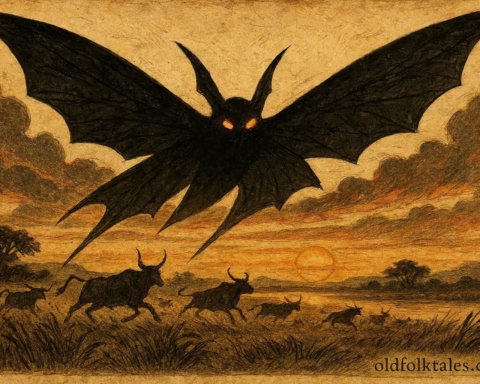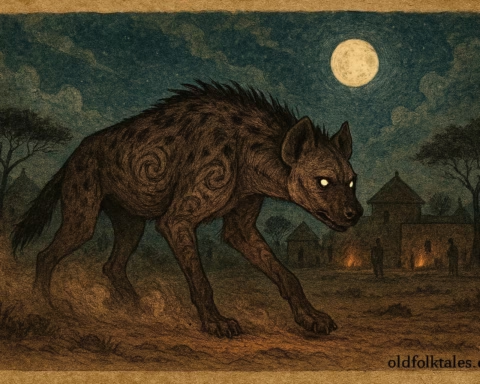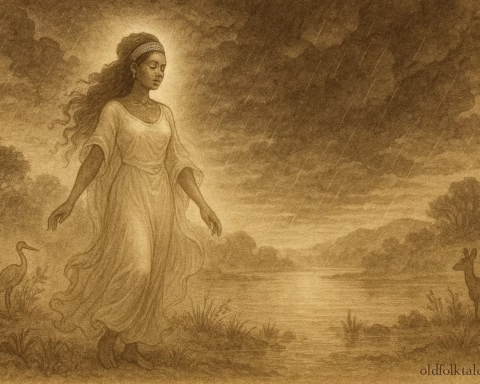The shadow in the village
In a quiet Xhosa village nestled between rolling hills, people spoke cautiously of the Tikoloshe, a mischievous spirit known to cause trouble when the moon rose high. The Tikoloshe was said to be small and shadowy, slipping unseen through homes to play tricks on children and adults alike. Many feared it, for the spirit could bring bad luck or frighten those who wandered too late at night.
The curious child’s encounter
One evening, a brave and curious child named Zola wandered beyond the village while the moon shone bright. Zola had heard stories of the Tikoloshe but did not believe them. Suddenly, a small shadow appeared, dancing just beyond the firelight. It was the Tikoloshe, smiling with mischief in its eyes. Instead of running away, Zola joined the dance, moving in rhythm with the spirit. The night filled with laughter and strange whispers as the two danced under the stars.
The warning in the dance
As the night deepened, the Tikoloshe paused and spoke softly to Zola. It warned that mischief had limits and that disrespecting the unseen world could bring danger. The spirit told stories of those who ignored the warnings and suffered illness, bad fortune, or worse. Zola listened carefully and promised to share the message with the village, understanding that the spirit’s mischief was also a lesson.
The child’s courage and wisdom
When dawn arrived, Zola returned home with a new respect for the Tikoloshe. The child told elders of the dance and the spirit’s warning. The village gathered to remember the importance of respect for the unseen forces and the dangers of wandering alone at night. Zola’s courage bridged the worlds, turning fear into understanding and reminding all to live in harmony with the spirits.
The lasting lesson
The story of the child who danced with the Tikoloshe is told to this day, warning children to be careful and respectful. It teaches that even mischief has meaning and that the unseen world deserves both caution and respect. Through courage and listening, harmony between the human and spirit worlds can be maintained.
Moral Lesson of The Child Who Danced With Tikoloshe
This tale teaches respect for the unseen world and warns against careless behavior. It shows that courage and wisdom help us understand and live peacefully with forces beyond sight.
Knowledge Check
- What is the moral of the folktale The Child Who Danced With Tikoloshe?
The story teaches respect for the unseen world and the importance of courage and wisdom to live in harmony with spirits. - What cultural group does the tale The Child Who Danced With Tikoloshe come from?
This folktale originates from the Xhosa tradition of South Africa. - Why did Zola choose to dance with the Tikoloshe?
Zola was curious and brave and wanted to understand the spirit rather than fear it. - How does the folktale The Child Who Danced With Tikoloshe explain mischief and warnings?
It shows that mischief from spirits has limits and often serves as a warning to respect the unseen. - Is The Child Who Danced With Tikoloshe a ghost story origin tale trickster story or spirit tale?
It is a trickster tale reflecting Xhosa beliefs about spirits teaching lessons through mischief. - Why is the tale The Child Who Danced With Tikoloshe still meaningful to modern readers?
The story remains relevant because it teaches timeless lessons about respect courage and understanding fear.
Cultural Origin
This folktale comes from the traditional beliefs and storytelling practices of the Xhosa people of South Africa.
